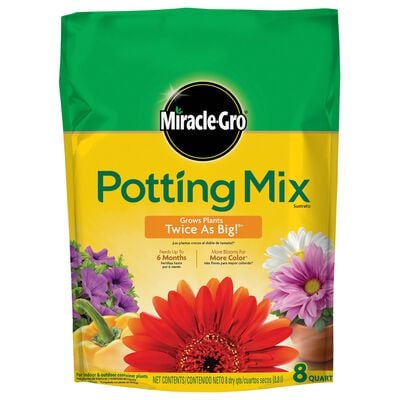
Windowsill Wonders: The Art of Winter Gardening
Unlock the secret to growing your own indoor herb and veggie paradise
With nature preparing for its slumber, it’s the perfect time to bring the green indoors. If growing a windowsill herb and vegetable garden has been on your to-do list, we can help make it happen! Growing inside has plenty of upsides — from enhancing the flavors of your meals and saving on your grocery bill, to eating organic and keeping busy during the cold, dark days of winter. You’ll find that staying connected to nature from the coziness of your home is just an all-around great feeling. Keep reading for the best ways to grow the edible garden of your dreams.
The Best Herbs
When choosing which herbs to grow by your window, it’s important to know which ones can adapt to indoor environments best. Two things to consider when deciding is whether you’ll be using a natural or artificial light source.
Natural Sunlight – Because there is less sunlight in the winter, herbs that don’t require a lot of sun like chives, mint, oregano, parsley and thyme are the easiest to grow indoors. And If you have a window that lets in at least 6-8 hours of sunlight, you can grow rosemary and sage.
Artificial Light – If you have your heart on full-sun herbs like basil and cilantro, you certainly can grow them indoors — they may just need a little help from a grow light.
The Best Vegetables
It may seem intimidating to grow vegetables indoors, but it’s easier than you may think (there are plenty of easy vegetables to grow!). We recommend you start with leafy greens like: spinach, leaf lettuce, mustard and arugula. Additionally, sprouts are super easy to grow too. And if you use a grow light and the right container hot peppers, carrots, scallions, radishes, and beets can all be grown indoors.

The Best Soil
Planting your herbs and veggies in soil that ensures they get the essential nourishment for robust growth is key. Use Miracle-Gro® Indoor Potting Mix, our specialized mix for just that. Beyond nutrients, it allows for optimal drainage which helps prevent root rot and reduces the risk of pests and diseases.
Once you have your soil, it’s time to think about what kind of container you’ll want to use. Choose a pot that gives your plants enough room to spread their roots and grow big and strong. And most importantly, your pot needs drainage. Without it, water will sit at the bottom of the container and lead to problems like soggy roots and yellowing of leaves.
The material you choose matters too. Here are some pros and cons of the 3 most common container materials:
Glazed ceramic
Pro – The most visually appealing of the bunch, this material comes in a myriad of patterns, endless designs, and a rainbow of color choices.
Con – They can restrict airflow

Terra cotta
Pro – The clay’s porous surface allows excess water to evaporate and oxygen to move in and out.
Con – They break easily and can become quite heavy and challenging to move as you go up in size.
Plastic
Pro – This lightweight and break-resistant material now comes in a variety of colors and patterns that closely mimic ceramic.
Con – Since you’ll be planting herbs and veggies in them, you’ll need to ensure that the plastic is food-safe.
The Best Food
Think of plant food as the secret sauce for your veggies and herbs. These container plants need their power-ups when growing indoors — and Miracle-Gro® Water Soluble Plant Food Vegetables and Herbs will do the trick. This fertilizer contains natural ingredients and instantly feeds, promoting big and bountiful results.
The Best Way to Water
Avoid over-watering your windowsill wonders — let them have a breather between sips. The trick is to poke your finger into the soil up to your knuckle. If the soil feels dry, it’s time for a watering session. When you do water, go all in — gently apply water around the base of your plants until water starts to pool in their saucers. Try to keep the water off the leaves. If after 15 minutes you notice there is water in the saucer, empty it out.
The Best Temperature
Indoor herbs and vegetables prefer the same temperature that most people do. However, since they’ll be next to a windowsill, you’ll need to watch out for cool drafts that seep in. Avoid having your plants touch the window and on windy days, move them out from the window altogether.
Also, your potted pals aren’t fans of dry conditions. So if you have your heater pumping (which you probably will) increasing the humidity with a humidifier is always a good idea.
The Best Garden Companion: The Miraculous Green Guide
Take a browse through our helpful guide teeming with inspiration, gardening tricks, expert tips, and a treasure trove of green know-how. Whether you’re a newbie to gardening or a seasoned aficionado, it’s primed to foster your garden aspirations and take your gardening skills up a notch.



